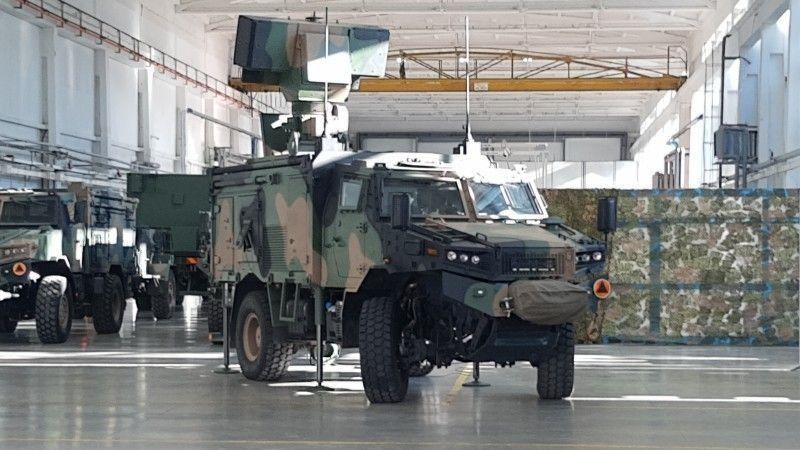Industry
Polish Radars Procured for the Pilica+ System

Head of the Polish MoD, Mariusz Błaszczak approved a performance contract on delivery of the Bystra radars for the Pilica+ systems. The value is PLN 1.1 bn., while deliveries would be finalized by 2028.
Head of the Polish MoD approved a performance contract on the delivery of 22 Bystra radars, for 21 Pilica+ systems. The contract has a value of PLN 1.1 bn., while deliveries would be finalized by 2028. PGZ-Pilica consortium is the contracting party, within the framework of the agreement signed with the Armament Agency. PIT-RADWAR, meanwhile, is the manufacturer of the radars within the consortium - it has developed the Bystra system. PIT-RADWAR's role within the PGZ Group is to design and create new generations of Polish radars.
The Bystra deployable radar utilizes a GaN AESA antenna. This is the first Polish radar as such. The radar may be operated across several modes, depending on the task assigned. In each of the modes, 360 degrees scan takes place through the rotation of the antenna and scanning of the space surrounding the radar with a software-defined beam. Bystra's instrumental range is 80 kilometers.
Within Pilica+ systems, Bystra would be used primarily to protect the Wisła batteries (IBCS/Patriot). For instance, these radars could be employed to detect low-flying threats, such as helicopters, drones, and cruise missiles - as this is the primary task assigned to this system. The Bystra radars may also work as a part of land forces' air defence units. Back in 2019, the Polish MoD procured 16 radars as such for PLN 635 million (gross). Deliveries would be taking place between 2023 and 2025.
The Pilica+ system would include elements of the PSR-A Pilica solution - the command station, SHORAD radar, six fire units with tractors, communications subsystem, and logistics support assets - ammunition carriers and transport vehicles. The aforesaid configuration would be complemented with SHORAD SAM systems, and Bystra radars. Then, AAA systems with programmable munitions, and a counter-UAS system would also be integrated into the Pilica+ ecosystem.
Spokesman for the Armament Agency, Col. Krzysztof Płatek announced that the baseline configuration of the Pilica+ fire unit would include, apart from the Pilica fire units and sensors (23 mm cannons, Grom/Piorun launchers with an advanced fire control system), two iLaunchers for the CAMM missiles. Hence, Pilica+ will be a dual-layer air defence system with Polish radars and C2, some Polish effectors, and further enhancements are also expected in the future - including programmable munitions, and C-UAS systems.
The PSR-A Pilica+ systems would be able to conduct operations autonomously, across a broad range of weather conditions and with poor visibility, with the use of passive target recognition and tracking sensors, based on radar-derived data sent from the battery command station. Six already ordered fire units would match the Pilica+ standard. At least 4 have been delivered already, while 15 would be brand-new.
The system configuration assumes that a capacity to recognize and ID the targets would be available, along with a capacity to act against airborne threats, with the use of SAMs, and AAA. The rate of fire and range of the AAA element would also make it possible to act against surface targets. Thanks to the common data-sharing protocols, the system ensures data transfer and reception across a network formed by other air defence assets.
